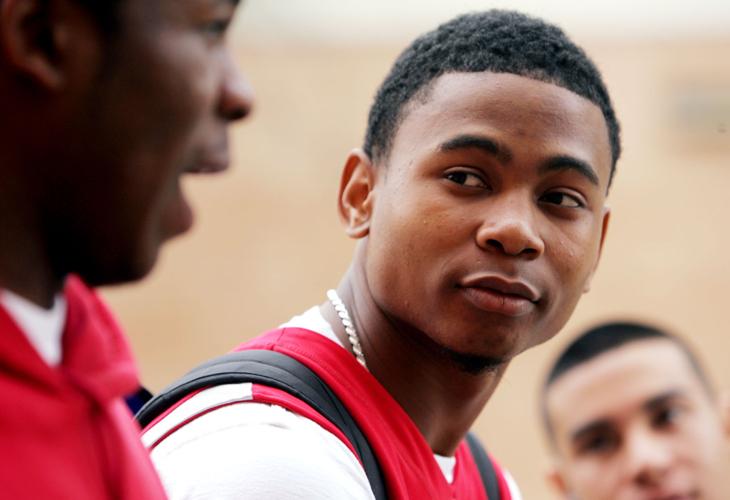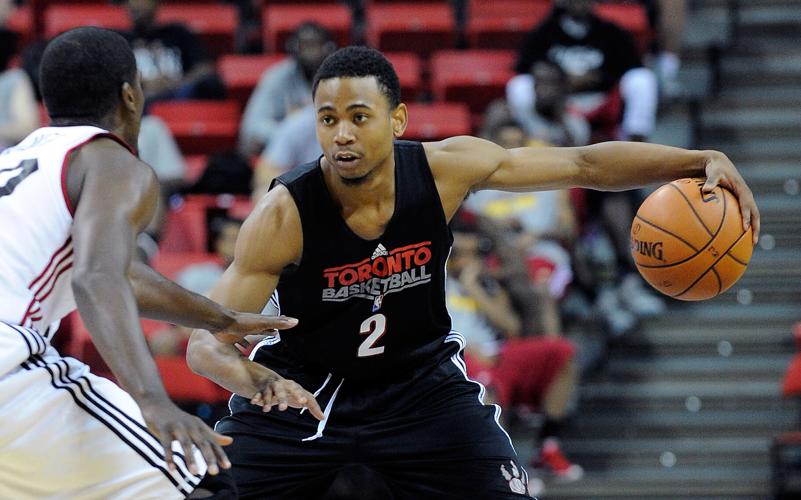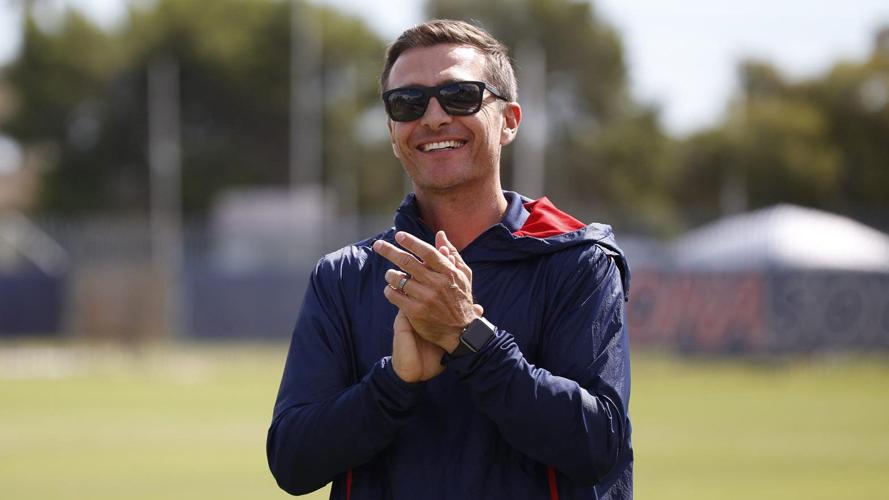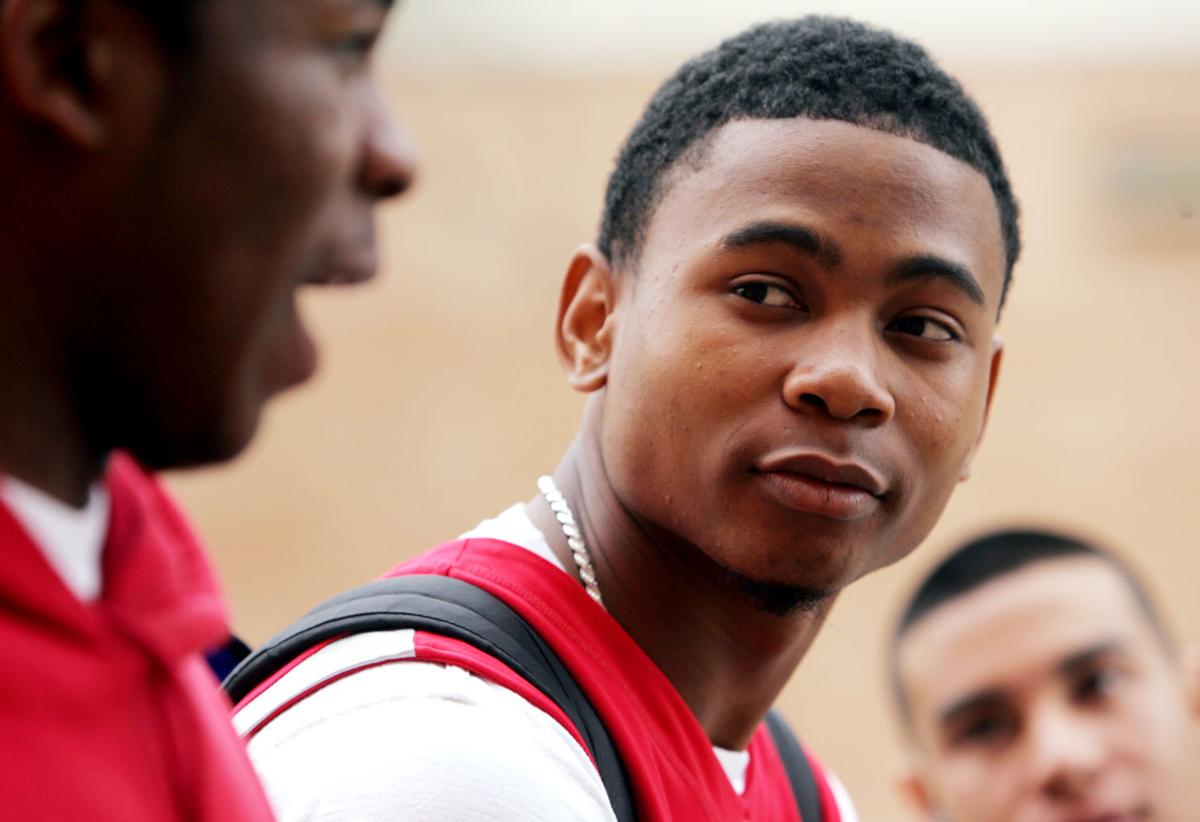The Star columnist examines the illustrious overseas careers of Tim Derksen and Terrell Stoglin. Plus, the latest — and notable — headlines from the Southern Arizona sports scene.
A few weeks ago while at lunch with Arizona basketball coach Tommy Lloyd, I asked if he was aware that Tucson hadn’t produced an elite basketball prospect for almost 40 years.
He did not. Lloyd will soon discover that as much as Tucson is a basketball town, it isn’t stocked with elite prospects the way many cities of a million people are. The last NBA-type talents to come through the Tucson prep system were Cholla’s Sean Elliott and Pueblo’s Fat Lever.
But in retrospect, I asked Lloyd a misleading question. Over that same period, Sunnyside’s Deron Johnson and Jermaine Watts, Pueblo’s Michael Perez, Cholla’s Chuck Overton, Salpointe Catholic’s Brian Smith and Tucson’s Shakir Smith, among others, were clearly Division I prospects — good enough to help any team, even Lute Olson‘s Wildcats.
And then there’s Amphi’s Tim Derksen and Santa Rita’s Terrell De Von Stoglin. Both had 2020-21 EuroLeague seasons that put them at the highest level of Tucson basketball history.
Derksen, who led Amphi to the 2011 state championship and was the Arizona Gatorade Player of the Year, last week was selected the Player of the Year in Switzerland’s EuroLeague. His numbers were terrific; the 6-foot 4-inch wing averaged 21.4 points, shot 60% from the field (50 percent from 3-point range) and made 84% of his free throws.
He led Lions de Geneve to a 21-3 record and the regular season championship. Derksen returned to Tucson last week and finally experienced some day-to-day freedom.
“I’m just trying to enjoy some normalcy after being in a (COVID-19) lockdown for 10 months,” he said.
Derksen will wait about two months to decide which free agency offer to accept.
Stoglin, who plays for AS Sale in Morocco — one of 14 foreign countries he has played in since leading Santa Rita to the 2009 state championship — became the first player to ever score 40 points in a Basketball Africa League playoff game a week ago. He has a career high of 74 in the EuroLeague.
At 29, he still has aspirations to play in the NBA.
“I plan to. It’s a dream of mine to have my son watch me play at home and have my parents in the stands,” Stoglin said last week. “I’d love to get back.

Terrell Stoglin has played professionally in Iraq, Bahrain, China, Egypt, France, Greece, Italy, Lebanon, Morocco, Poland, Qatar, Saudi Arabia, Turkey, Ukraine and Venezuela.
“I went through a depression because for so long I thought it’s the NBA or nothing. As I started to grow, I realized that this has been the best thing that could’ve happened to me. I don’t think NBA players have the worldly knowledge that I have. It’s more than basketball. Now I use basketball to learn about life and enjoy life.”
In their days at Amphi and Santa Rita, Derksen and Stoglin were rivals, taking turns winning state championships. Stoglin went to Maryland, Derksen to San Francisco. Amazingly, they combined to score exactly 2,500 points in their NCAA basketball careers.
If that’s not reflective of elite prospects in Tucson, what is?
Brown junks the bus, flies to the NCAA playoffs

UA pitcher Tod Brown. Arizona Daily Star file photo taken May 4, 1994 by Benjie Sanders.
Sabino High School and UA grad Tod Brown coached North Dakota State to the NCAA baseball tournament again this year (he also did so in 2016), winning the Summit League championship last week in Omaha, Nebraska.
Brown’s journey to the NCAA playoffs is not what you’d see from Arizona or ASU.
NDSU, which lost at Stanford in Friday’s NCAA opener, had to play 25 road games at a school that does not exactly fly first class. The Bison were on the bus for 12,845 miles this season,.
“We slept on the bus 11 nights,” Brown told me. “We spent 39 nights in a hotel yet won five road series. We’d generally leave for a series at 10 on a Wednesday night and arrive about 10 a.m. the next day. The guys are excited to fly to Stanford, our first flight of the year.”
Brown’s team traveled by bus to games in Ohio, Kentucky, Kansas, Nebraska, South Dakota, Colorado and Missouri. They went 20-11 to win the Summit Conference, yet he wasn’t even voted Coach of the Year.
Brown was similarly a grinder as a UA pitcher in 1993, when he led the Wildcats both in wins (six), saves (seven) and ERA (3.90). The walk-on from Sabino helped pitch the UA to the regional finals. He was Arizona’s team captain in 1994 and a volunteer assistant coach under UA coach Jerry Stitt before establishing his identity as a head coach in North Dakota.
3 questions for the week

Arizona's Jacob Berry (15) launches a blast to the fence to drive in the game winner in the bottom of the ninth for a 5-4 win against Dixie State at Hi Corbett Field, Tucson, Ariz., May 29, 2021.
How did Arizona freshman Jacob Berry not win the Pac-12 baseball Player of the Year award?
A: Pac-12 coaches selected Oregon third-year sophomore outfielder Aaron Zavala. But if you examine the numbers, it’s not close. Berry drove in 64 runs, Zavala just 34. Both hit in the middle of the lineup. Berry had 36 extra-base hits, Zavala 20. Zavala hit .398 and Berry .371.
What happened? I think it’s as simple as the coaches didn’t want to select a freshman. Since 1978, no freshman has been the Pac-12’s baseball Player of the Year.
Why didn’t Duke select ASU’s Bobby Hurley as the successor to Mike Krzyzewski?

Duke guard Bobby Hurley drives past Arizona's Matt Othick on Feb. 24, 1991 at McKale Center in Tucson. Bruce McClelland / Arizona Daily Star
A: Part of it is that Krzyzewski is staying through the 2021-22 season. Had Duke not announced a successor, Hurley would’ve essentially been viewed as a lame duck this year, his recruiting power paralyzed, as would’ve been the Sun Devils program. Hurley is the obvious most qualified Blue Devil replacement. Not selecting him is like Arizona not trying to hire Steve Kerr if Kerr had been coaching at, say, Kansas State.
But hiring a famous alumnus hasn’t worked in the Pac-12. After John Wooden retired at UCLA, the Bruins hired famous Wooden proteges Larry Farmer and Walt Hazzard and neither worked out. And Oregon State, a top-25 program in the 1980s, hired Beaver alumnus Jimmy Anderson to replace Hall of Famer Ralph Miller. Anderson was fired after four seasons.
Now those who viewed Hurley as a temporary coach at ASU can get on board with the Sun Devils’ seemingly endless rebuilding job.
Did Florida make the right hire by plucking Arizona women’s soccer coach Tony Amato to coach the Gators?

Former University of Arizona head soccer coach Tony Amato.
A: Amato’s eight years at Arizona resulted in a 39-39-9 Pac-12 record and five NCAA appearances. In Tucson, that’s about the max you can expect in the nation’s top soccer league.
But Florida previously raided Arizona to hire women’s golf coach Kim Haddow and UA assistant softball coach Larry Ray. Neither worked out. Ray was dismissed after four seasons, never reaching the Women’s College World Series. Haddow, who had recruited Annika Sorenstam to Arizona and finished No. 2 in the NCAA, left the Gators after four seasons.
Tucson's Hardy makes Orioles hall

Baltimore Orioles' J.J. Hardy safely slides home during the 12th inning of a baseball game against the Detroit Tigers, Tuesday, May 16, 2017, in Detroit. (AP Photo/Carlos Osorio)
Sabino High School grad J.J. Hardy will be inducted into the Baltimore Orioles Hall of Fame on Aug. 7. He will be part of the 2021 class with longtime Orioles broadcaster Joe Angel. Hardy spent 13 seasons in the major leagues and was selected to two All-Star Games and won three Gold Glove awards. Married to former Marana High School and UA softball standout Adrienne Acton, Hardy and the couple’s boys, Jay and Leo, live in Chandler for much of the year. Hardy also has a hunting lodge in Montana along Flathead Lake.
The Gregory School alumnus coaches USF to NCAA championships
Tucsonan Jack Kennedy coached the USF Dons to their first-ever NCAA men’s golf tournament last week. The Dons placed fourth in the Western regional to qualify, beating Pac-12 champion Arizona to get a spot in the finals, at which they finished 29th. Kennedy graduated from The Gregory School in 2001 and has a master’s degree from USF. He also spent a year as an assistant basketball coach at San Jose State. He is the son of Doug and Debby Kennedy; Doug is a former Tucson City Councilman. Debby is former Dean of Admission at The Gregory School.
Tucson golfer qualifies for U.S. Senior Open
Tucsonan Eric Rustand shot a tournament-leading 69 to win the U.S. Senior Open qualifying tournament at Arizona Country Club last week. The field included former PGA Tour winners Willie Wood of Sabino High School and ASU’s Tom Purtzer. Rustand will now play in the U.S. Senior Open next month in Omaha. The son of Arizona’s 1960s All-WAC point guard Warren Rustand, Eric is no stranger to golf success. He has played in 185 pro events, including the 1999 Tucson Open in which he finished seventh and earned $77,297. Rustand is a consultant executive for CBIZ, a benefits and human resources firm.
Sahuarita product turns head at Single-A level

Sahuarita's Jose Dicochea delivers pitch during their 3A State Championship against Sahuarita in Mesa, Monday, May 13, 2019.
The next Southern Arizona baseball player to reach the major leagues could be former Sahuarita High School pitcher Jose Dicochea, now pitching for the Oakland A’s Single-A affiliate in Stockton, California. Dicochea has struck out 21 hitters in 13 1/3 innings at Stockton. That’s the kind of overpowering pitcher he was at Sahuarita from 2017-19, going 15-3 with 186 strikeouts in 123 innings. Dicochea committed to play for Arizona’s Jay Johnson before being drafted by the A’s.
Tucson's Blockburger to participate in NCAA semifinals

Johnnie Blockburger
Arizona freshman Johnnie Blockburger of Tucson High School will run in the semifinals of the 400 meters Wednesday night at the NCAA finals in Eugene, Oregon. Blockburger set the UA record this season, 44.71 seconds, and is ranked sixth among best times in the NCAA this season. His coach, Francesca Green, believes Blockburger, the Pac-12 champion, has a good chance to reach Friday’s finals. “He’s got toughness and he’s not afraid of a challenge,’’ said Green. “I think he’ll respond favorably to better competition.’’
Tolman a baseball man to the core

This is a 2011 photo of bench coach Tim Tolman of the Cleveland Indians baseball team. This image reflects the Cleveland Indians active roster as of Tuesday, Feb. 22, 2011 when this image was taken. (AP Photo/Mark Duncan)
Outfielder Tim Tolman led USC to the 1978 NCAA baseball championship, beating ASU in the finals, and becoming the Pac-10 player of the year.
That was the ballplayer Tucson baseball fans saw in 1981, when Tolman hit .322 with 14 homers and 99 RBIs for the Tucson Toros’ division champions, becoming a Pacific Coast League All-Star. Tolman remains one of the most productive players in Tucson minor league history, hitting .303 with 30 homers and 169 over parts of five seasons in the ‘80s.
He made Tucson his home for the last 40 years.
By 1996, Tolman was the Toros manager, an engaging, glad-to-see-you-at-the-ballpark personality who went on to coach in the Cleveland, Houston and Seattle organizations. Sadly, he retired from day-to-day coaching activities a few years ago when he was diagnosed with Parkinson’s disease.
Tolman, 65, died Friday. He is survived by his wife, Christy, whom he met while playing for the Toros, and sons Andrew and Casey.
Dosty a what-might-have-been story

Former UA basketball player Robbie Dosty, left, takes a knee with his daughter Sybil Dosty for a photo in the gym at Tucson High in 2003.
ASU basketball coach Ned Wulk was the first college coach to get a recruiting agreement from Coolidge High School football-basketball standout Robbie Dosty. The two-time 1970s All-State receiver and basketball dynamo was going to play for the Sun Devils.
But after Dosty required a year at Colby Junior College in Kansas — where some thought he was the No. 1 NJCAA prospect in the nation, averaging 22 points a game — Arizona assistant coach Jerry Holmes successfully persuaded Dosty to play for the Wildcats.
On July 1, 1977, Dosty signed to play for Arizona, projected as Fred Snowden‘s next big thing in the impressive line of Coniel Norman, Bob Elliott and Eric Money.
But after averaging 11 points per game as a UA freshman in 1977-78, Dosty was seriously injured in a a one-car automobile rollover and required two knee surgeries. By the time he regained his touch, in 1980-81, he averaged 13 and scored 32 one night against Stanford, 25 another night against the Sun Devils.
But his knee issue took a significant toll. Dosty was no longer an NBA prospect. He went from job to job over the next few decades, trying to find himself. It was a more difficult battle than any knee injury or ballgame at Pauley Pavilion.
Dosty died of cancer Friday. He was 62. His was a troubled life of what might have been.















